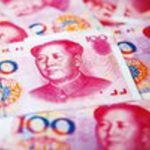Yesterday, the Chinese currency strengthened against the US dollar as the People’s Bank of China offered assurances to market participants who were concerned about the currency’s sharp declines recently. The Financial News, a publication supported by the PBOC and the PBOC, announced on Wednesday: “Even if the yuan market for exchange has an unpredictably high level of panic There are a wealth of tools to manage the “herd effect” and guarantee the efficient functioning of the exchange market.”
That reassurance was directly followed up on on Thursday as the bank set another stronger-than-expected midpoint fixing for the fourth-straight day this week, which traders believe is an attempt to prevent the yuan from weakening too fast and too far.
Source: reuters.com
